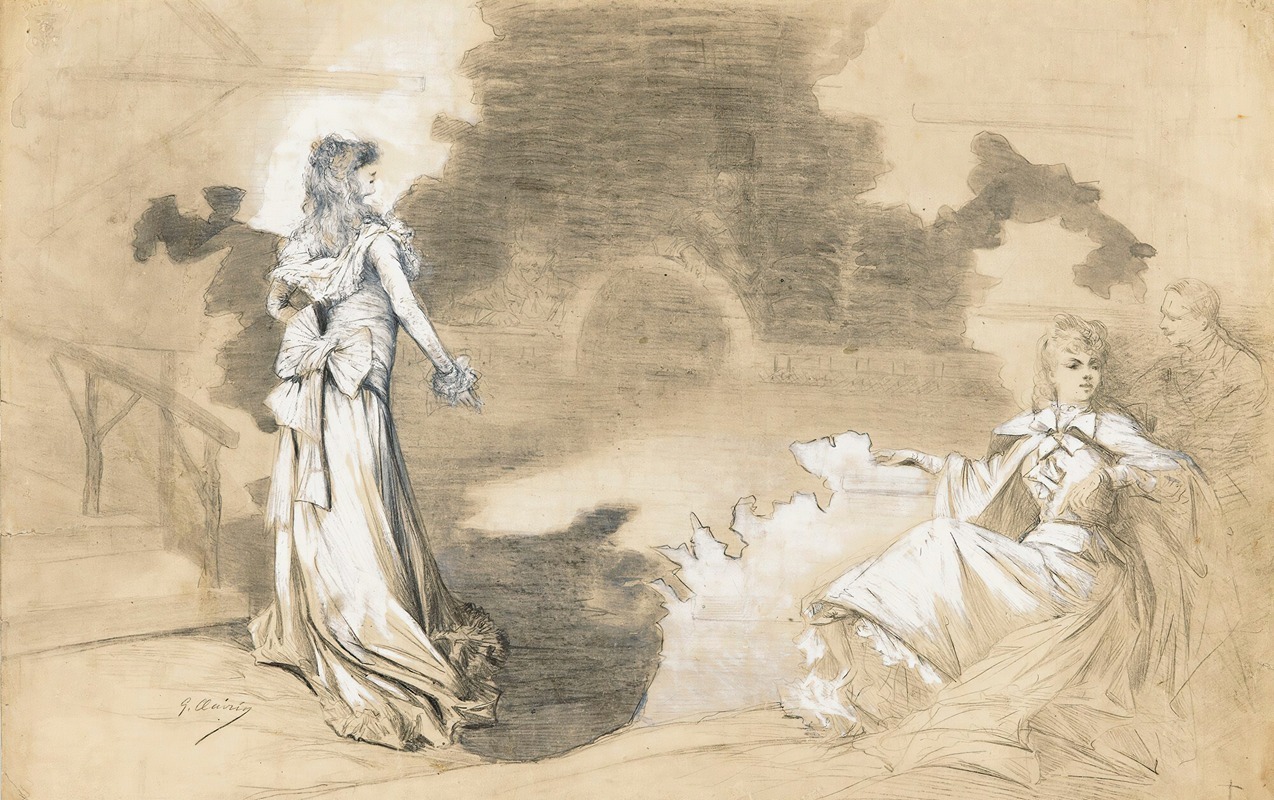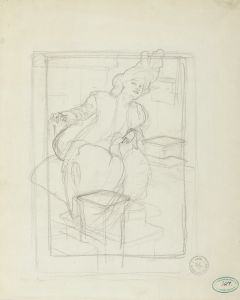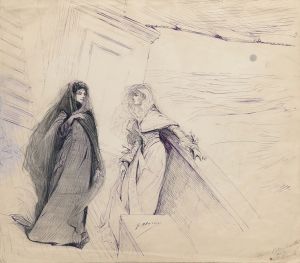
Scenes of Sarah Bernhardt’s life
A hand-painted replica of Georges Jules Victor Clairin’s masterpiece Scenes of Sarah Bernhardt’s life, meticulously crafted by professional artists to capture the true essence of the original. Each piece is created with museum-quality canvas and rare mineral pigments, carefully painted by experienced artists with delicate brushstrokes and rich, layered colors to perfectly recreate the texture of the original artwork. Unlike machine-printed reproductions, this hand-painted version brings the painting to life, infused with the artist’s emotions and skill in every stroke. Whether for personal collection or home decoration, it instantly elevates the artistic atmosphere of any space.
Georges Jules Victor Clairin, a notable French painter of the 19th and early 20th centuries, is renowned for his depictions of theatrical and exotic subjects. Among his works, "Scenes of Sarah Bernhardt’s Life" stands out as a significant piece, capturing the essence of one of the most famous actresses of the time, Sarah Bernhardt. Clairin and Bernhardt shared a close friendship, and this relationship is often reflected in his portrayals of her, which are imbued with both admiration and insight into her multifaceted personality.
Sarah Bernhardt, often referred to as "The Divine Sarah," was a French stage and early film actress whose career spanned several decades. She was known for her dramatic presence, emotive performances, and her ability to captivate audiences. Bernhardt's life was as theatrical as her performances, filled with triumphs, controversies, and a relentless pursuit of artistic expression. Clairin's painting seeks to encapsulate these elements, offering viewers a glimpse into the life of a woman who was both a public icon and a private individual.
Clairin's artistic style is characterized by its vibrant use of color and fluid brushstrokes, which he employs to great effect in "Scenes of Sarah Bernhardt’s Life." The painting is not a single scene but rather a series of vignettes that collectively narrate the story of Bernhardt's life and career. Each vignette captures a different aspect of her persona, from her roles in famous plays to her off-stage life, highlighting her versatility and the breadth of her influence in the arts.
The composition of the painting is dynamic, with each scene seamlessly flowing into the next, much like the chapters of a book. Clairin's attention to detail is evident in the way he captures the nuances of Bernhardt's expressions and gestures, conveying her charisma and the intensity of her performances. The use of light and shadow adds depth to the painting, enhancing the dramatic effect and drawing the viewer into Bernhardt's world.
Clairin's relationship with Bernhardt was not merely that of an artist and his muse; it was a collaboration that allowed him to explore the complexities of her character and the world of theater. His intimate understanding of her personality and career is reflected in the authenticity of the scenes depicted in the painting. This authenticity is what makes "Scenes of Sarah Bernhardt’s Life" a valuable historical document as well as a work of art.
The painting also serves as a testament to the cultural milieu of the time, capturing the spirit of the Belle Époque, a period characterized by artistic flourishing and social change. Bernhardt was a central figure in this era, and Clairin's work immortalizes her contribution to the arts and her enduring legacy.
In summary, "Scenes of Sarah Bernhardt’s Life" by Georges Jules Victor Clairin is a masterful portrayal of one of the most iconic figures in theatrical history. Through his skillful artistry, Clairin not only celebrates Bernhardt's achievements but also provides a window into the vibrant cultural landscape of the late 19th and early 20th centuries. The painting remains a significant piece in the study of both Clairin's oeuvre and the life of Sarah Bernhardt, offering insights into the intersection of art, theater, and society during a transformative period in history.
















